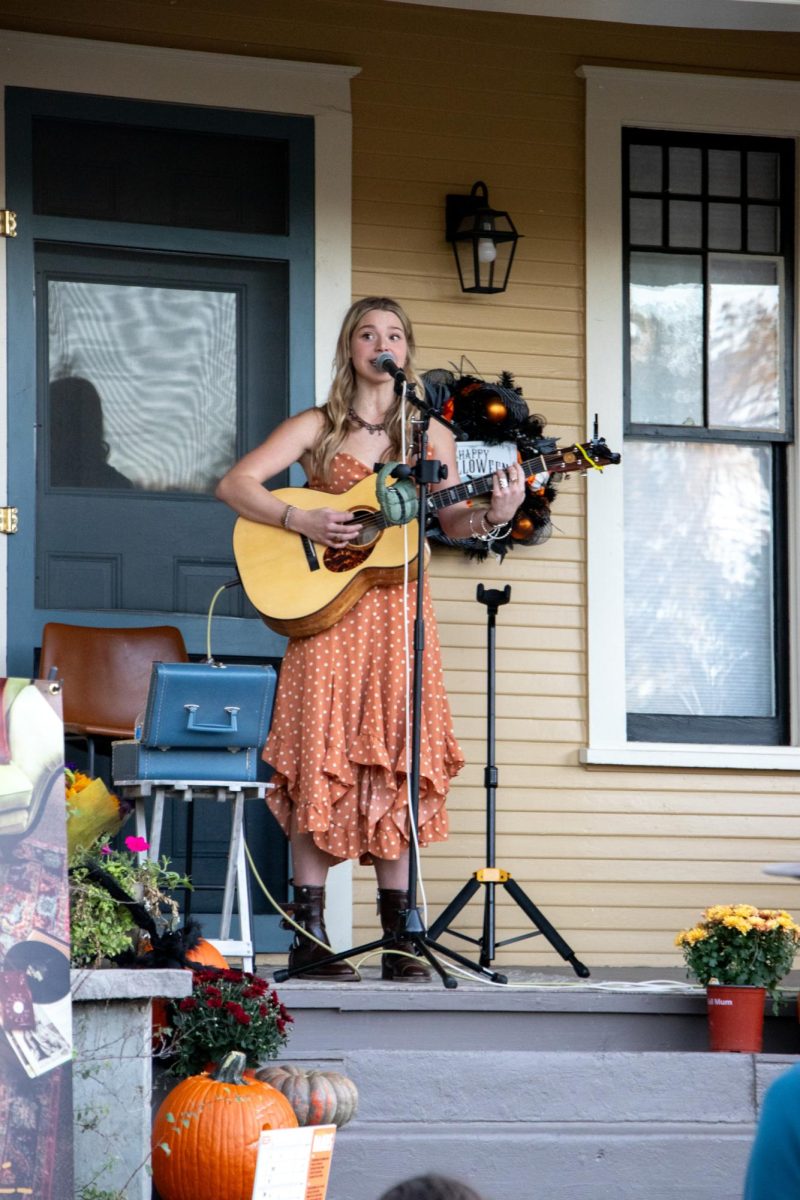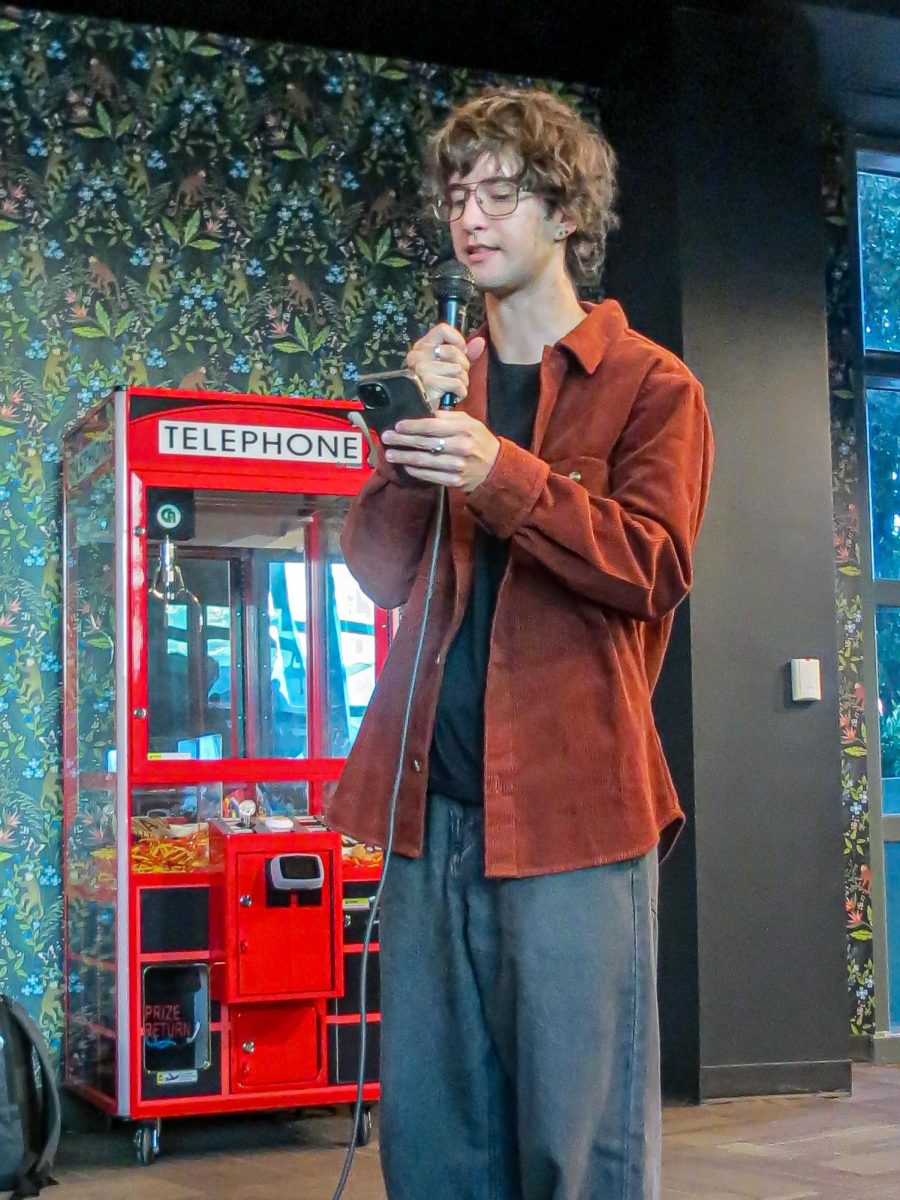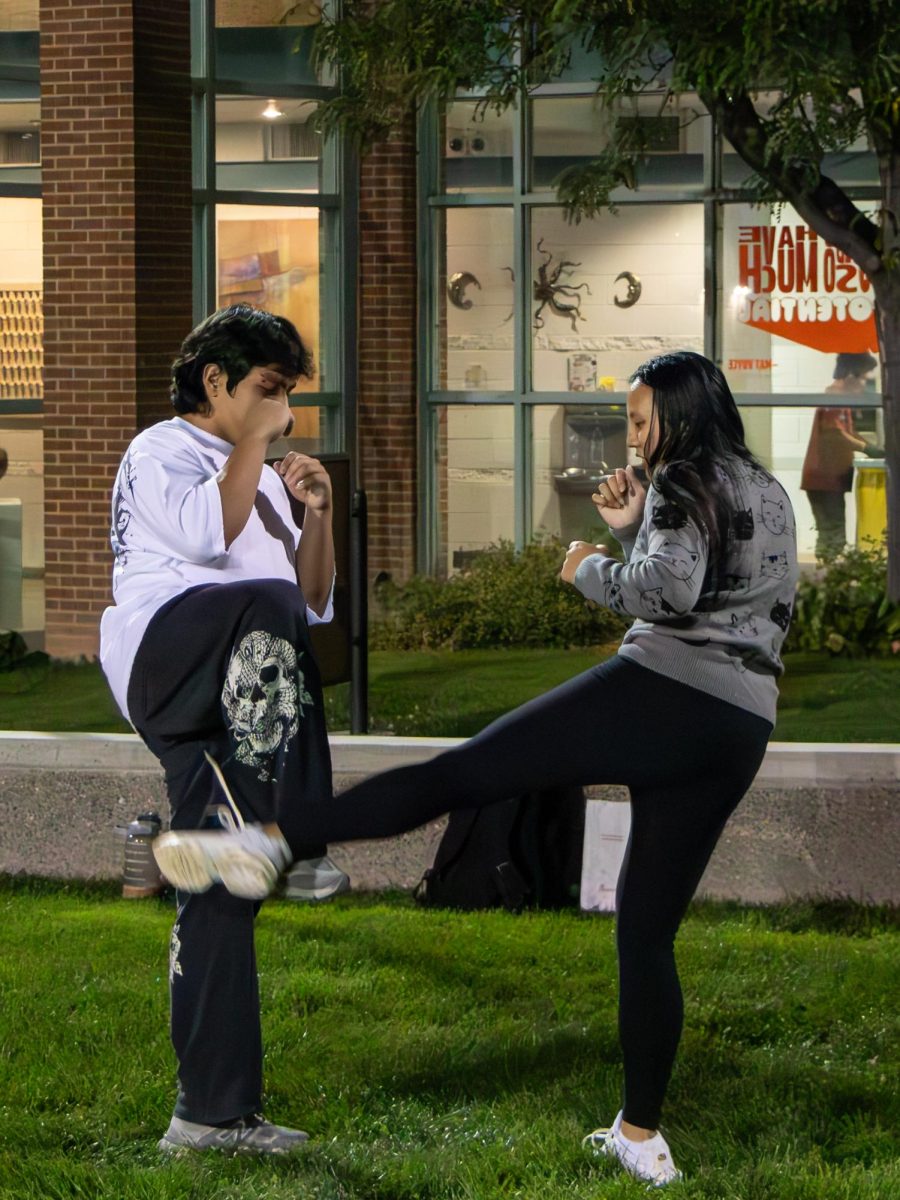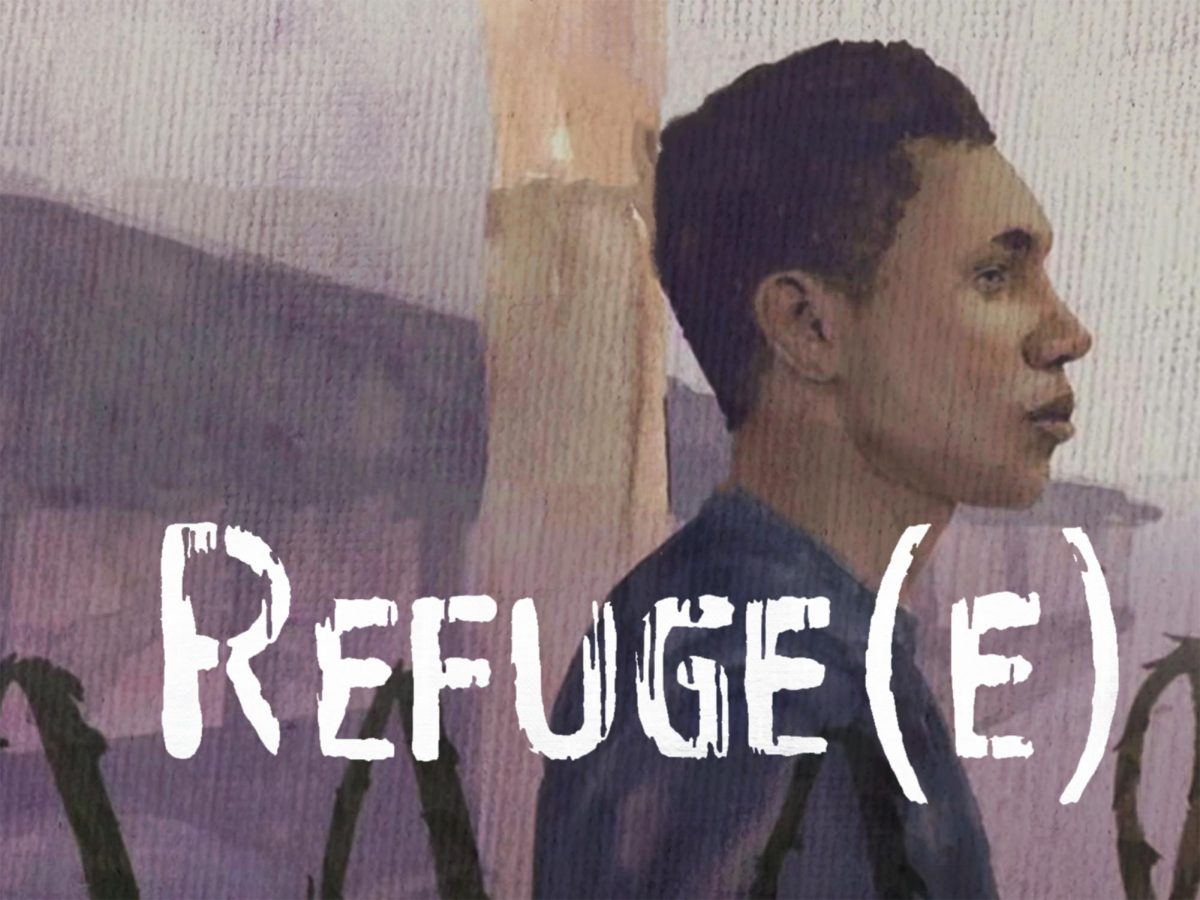Dinosaurs are the stuff of many kids’ dreams. The teeth of the Tyrannosaurus Rex. The spines of the Stegosaurus. The long neck of the Brachiosaurus.
For paleo-illustrator Brooke Safken, drawing dinosaurs is her day job.
“When we’re kids, we get a dinosaur book, and it has the artwork in there, but you never really think too much about where that artwork comes from,” Safken said. “And it’s an entire job market, which is a subset of scientific illustration.”
Safken, who graduated from Colorado Mesa University (CMU) in 2014, now also teaches courses in the Art Department. She stumbled across the idea of being a paleo-illustrator when she was still in high school. She has degrees in illustration and paleontology.
Paleo-illustration is in a similar vein as medical, botanical and anatomical illustration, only specifically concentrated on dinosaurs.
Safken’s process starts with a reconstructive process.
“The last major reconstruction that I did was [the] Utahraptor. We have a completely new skeleton that’s revamped, looks nothing like it used to out of Utah. And I was the second person to ever get to reconstruct it,” Safken said. “I ended up with MRI scans off of the original fossils, any field notes and measurements and stuff that came off of the specimens that have been recovered. Sometimes there will already be diagrams that have been there.”
In this case, a map of the bones had already been constructed, and measurements had been taken, which made it easier to work with. Sometimes, she uses the measuring tools provided with the scans to determine just how large a specific bone or part is. Other times, there’s no scan at all, and she has to use the picture of bones in matrix, which means it’s still in the stone it was found in.
“I take all of those things and integrate them into my illustration. I start off with a sketch; that sketch gets approved, I bring that into Photoshop, which is where I do all of my professional illustration,” Sakfen said.
Using perspective grids and trying to make a 3D representation of the dinosaur takes time, but the process has become normal for Safken. After building the skeleton, on top goes muscles, skin, feathers, and painting, which takes the longest amount of time of any of the steps.
Illustrating muscles when nobody knows exactly how they attached to the bones leads to a lot of comparative anatomy, such as modeling based off of existing birds or other animals. Safken has bought frozen chickens from the store before to study what the muscles could have looked like on some of the dinosaurs she’s drawn.
“Every Thanksgiving, we usually have a turkey. That turkey gets thoroughly handled in probably some weirder ways that people wouldn’t necessarily think to do,” Safken said.
Most of the work she currently does is for museums, with most other work coming from commissioned artwork. She made sketch cards for collectors boxes for Jurassic World back in 2015 as a part of her work in the film industry.
Drawing dinosaurs has a unique problem among illustration fields – that’s the fact that there are no real-life references or photographs to work from when it comes to drawing skin, texture and other features that dinosaurs might have had, such as feathers. This has led to what the paleo-illustration community calls a “meme.”
“We all know ‘meme’, like internet funny things,” Safken said. “All the root of the word meme means is it’s a repeated thought.”
In other words, “meme” here means a staple of art or literature.
“In paleo art, because these things are supposed to be as accurate as possible, there’s a huge responsibility on us artists that way, because anything that we put into that illustration might become a meme, that is either positive or negative going down the line.”
One of the most well-known examples of a meme in the paleo-illustrator community is what happened with Phorusrhacids, or “terror birds.” Living until as recently as 1.1 million years ago, these Ice Age monsters were massive birds that could eat small horses.
One of the first reconstructive illustrations done for these birds theorized that the species was covered in emu-like, long and draping black feathers. Think of a kiwi with legs and a neck.
For over 150 years, terror birds were drawn with these feathers, even though there was little or no evidence that they actually had these feathers at all, simply because the first illustrations had them.
“They probably don’t actually have feathers like that,” Safken said. “They probably look more like a giant, horrifying chicken. But you know, to each their own, I would still run from it.”
Memes can be damaging in that the public, and others who look at dinosaurs, trust what the diagrams and illustrations have, even if they could be incorrect, which could lead to misconceptions.
Her favorite dinosaur is one straight from Colorado.
“Allosaurus is definitely my favorite. That’s who I have reconstructed the most. He’s my favorite dinosaur. I just think they’re beautiful,” Sakfen said. “They’re kind of a smaller, quicker, faster, more deadly version of a T-Rex. Their nickname is called the Lion of the Jurassic and it’s a local dinosaur. They’re from here so how can you not love them?”









